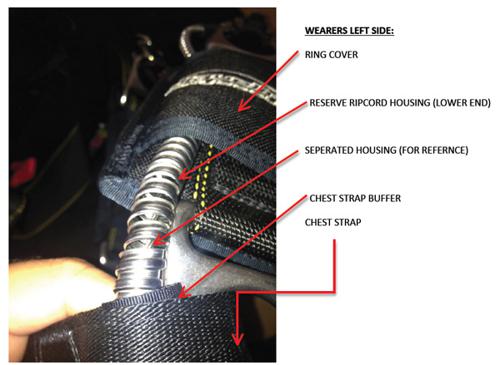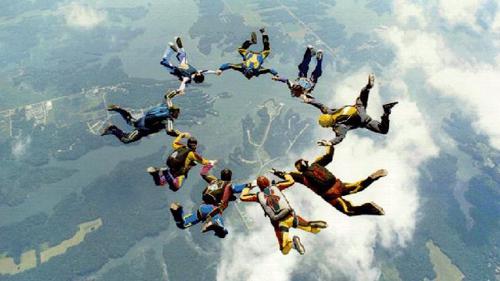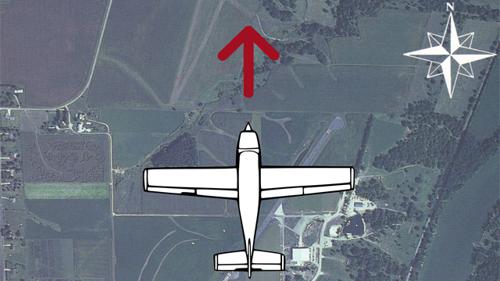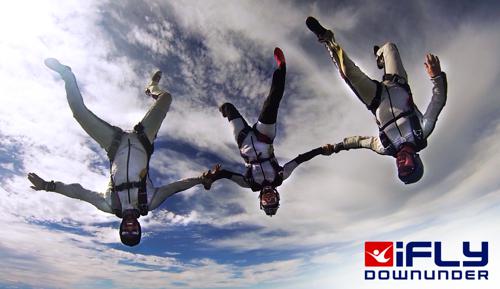Measuring “Spotlight Effect” Interference On a Peripheral Vision Matching Task.
ChrisD
Abstract
In historical peripheral studies, peripheral stimuli are presented and measures are taken on known central task behaviors and the effect on the main task is measured. In this experiment a dual task peripheral stimulus is presented and a central task is presented using Eriksen & Eriksen’s (1974) “Attentional Spotlight” paradigm. What makes this study interesting is that the central field is completely flooded with stimulus thus making parallel processing aka Treisman’s “features and objects” paradigm compared with very fast and multiple serial searches, independent of the search/ experimental paradigm used. Thus regardless of the serial or parallel search debate, effects of a central stimulus presented in a varying attentional spotlight area can be measured reliably regardless of the attention demands of a task. Early results suggest stimuli presented within the attention spotlight have a pronounced and unavoidable linear negative effect on varying levels of peripheral task performance. Discussions on subject age and behavior/ occupation requiring a high degree of attentive awareness/ vigilance such as driving or piloting are discussed also.
Introduction
Current perceptual/ cognitive research may be limited by methodological hindrances. Computer screens by their very nature limit current visual field measurements, which generally cover 1 degree to 20 degrees of the visual field depending upon the subjects distance from the computer screen. Further complicating visual research paradigms is the fact that perception is mainly a binocular phenomenon. This complicates visual search paradigms considering pre-attentive features that may or not, “pop-out” (Treisman, 1986), primarily a parallel search process, as compared with more attention driven, serial search paradigms. Further complicating this is the switch from a wide processing area to a relatively small and restricted area for intense serial processing during periods of intense concentration or high stress (Murata 2004). Understanding these two paradigms has great implications for any subject that depends upon these visual perceptual systems for their particular task, such as pilots or motor vehicle operators. Many researchers have suggested two distinct visual attentional systems. One wide area resource gathering system that quickly switches to a serial search with a very narrow, less than 2 degrees of visual field angle, field of view which is also called the “spotlight effect.” (Spotlight effect known about since the 1950s, generally attributed to Eriksen & Eriksen, 1974, and Posner, various.) This switching effect which Rufin VanRullen (2004) points out is highly dependent on attentional load or how many tasks an individual is involved in. He refers to dual task activities as the: “…two distinct attentional resources paradigm.”
However with small computer screens this visual spotlight effect, parallel, serial search processing paradigm suffers as subjects can readily switch search areas or due to the narrow visual field, they can readily conduct a quick search of relevant features with their attentional spotlights. As an example Crundall, et al., (1998, 2002) research supports this as when experienced drivers visual information acquisition is different than compared with inexperienced drivers that use different and limited visual field areas as an example (Ruff 2004, et al.). This highlights the parallel/ serial confound by studies using limited visual areas as the subjects can utilize fast serial searches due the restricted viewing area and or utilize parallel searches due the same reason. Other research paradigms present realistic driving simulators and or real driving studies and label the driving task as the primary or spotlight effect and vary and measure the effects of various peripheral stimuli and the effects of these peripheral stimuli upon the central (spotlight) task performance (Ruff 2004). Frequently the perceptual tasks whether dual or single, complicated or simple place extraneous demands upon the simulation (Recarte et al. 2003, Ivanoff et al. 2003). Additional studies have subjects attend to varying visual tasks to measure the area of this attentional visual field narrowing by varying central task loads (Horrey et al. 2004). This amounts to a perspective switching in a sense as too exactly which is the spotlighted effect or the peripheral task becoming the spotlighted area. Perspective switching between central tasks being affected by varying peripheral loads or intrusions, compared with peripheral tasks becoming the central task. In other words the subject can move the spotlight; the subject determines which is the spotlighted area merely by directing attention to the stimulus, whether in the central area or the peripheral area!
A corollary to this idea is the general dearth of research on central field of view influence on peripheral tasks. Whereas there is much research and a generally accepted view that certain peripheral stimulus can attract attention even in high attentional demanding environments, this experiment tries to study the effect of a central stimulus while performing a dual peripheral vision task, independent of the constraints imposed upon the subject by narrowed visual fields popular in computer research and imposed by the dominance of task experienced in real or driving studies. I.e. in real driving or acquisition type studies the subject by the very nature of the task is pre-occupied with that same task! In this experiment the peripheral area is flooded with stimulus and the effects of a central intrusive distractor flood the area of this spotlight regardless of any search paradigm or eye position. Thus the effects of this spotlight can be discerned from a peripheral task when the subject (hypothetically) is unable to use the central spotlight to complete the peripheral task. Additionally discussed are general effects of the narrowing attentional spotlight whether it is a perceptual phenomenon or a cognitive phenomenon and the effects of stress upon subjects of varying ages (Roge 2004, Recarte et al. 2003,) and of particular concern is the phenomenon of perceptual blindness/ inattentional blindness experienced by some subjects during the course of this experiment (Simons, Chabris 1999, Lavie 2005).
Method
Seven participants ranging in age from 24 to 72 “volunteered” to be subjects for this experiment, although not all subjects finished a full set of trials. Occupations ranged from retired, full time professionally employed, disabled, to college students. The setup and apparatus included commercially available emergency warning “strobe” lights, a hand stopwatch and various manual switching devices and a power supply. The lights came from the factory with 12 pre-programmed flash patterns, depending upon pattern selected, the flash patterns ranged from a simple one second flash to a barely discernable 4 flash in 500 millisecond alternating with a persistence delay of 250 milliseconds with an intervening blank period of 150 milliseconds. The lights were, according to the manufacturer capable of being synchronized to a very high degree of reliability less than 50 milliseconds of variance and the flash duration less than 1 millisecond of residual after glow. Two amber lights capable of 3000/ meter candela (daylight) were positioned at the periphery of a centrally seated subject at about 180 degrees to 160 degrees of visual angle. The lights were roughly 5 feet apart. The lights were synchronized to flash in various patterns. The patterns were categorized into three distinct degrees of difficulty: easy, med., and hard, based upon subjective subject reports, and initial practice runs based upon increasing reaction times for a correct response. Responses were limited to “same” for conditions when the right and left peripheral lights flashed the exact same pattern. And “different” for when the flashes were not the same pattern. A central distractor white light was positioned roughly in front of the subject about 30 inches away, this light was capable of 16,000 candela’s (roughly the amount of light on a clear day in a blinding reflecting snowfield.) All lights were adjusted to roughly the subject’s eye level in height from the floor. Gender and age information was the only personal information taken although most subjects volunteered any relevant medical and occupational information. All subjects were asked if they had any prior epileptic or seizure medical conditions, as lights of this intensity and duration have induced seizures in test subjects sensitive to these disorders. Basically a triangular pattern was formed with the subject in the center. The procedure consisted of setting the peripheral side amber lights to flash either the same or different, only response times for correct trials were collected as it became problematic to collect incorrect identifications, either the response time persisted into minutes or a correct discrimination was impossible. See Recarte 2003 p. 124 for a more complete discussion of this rational. 10 combinations of flash patterns were selected, categorized and presented to subjects in a random fashion. Two sets of these patterns were a repeated designs measure to enhance internal and construct validity. After an initial 500 or no millisecond delay a white distractor flash was concurrently presented in all trials, the only thing that varied as far as the white distractor was the initial onset of 0 millisecond delay to 500 millisecond delay. This created two conditions: a peripheral matching task, and a peripheral matching task with a central distractor, the white distractor delay could not be accurately measured and was not included to make more than two conditions. Initially the distractor was presented immediately after the matching task, but it became evident that a rapid identification was taking place so the distractor presentation and matching tasks were randomized to eliminate this “learning effect.” A more robust and or accurate timing system to measure reaction times was desired by this experimenter to see if any interaction effects could be discerned as this setup only allowed for reaction times to be roughly taken for the two conditions of correct responses. Some subjects reported “they thought” they had an initial decision but the central field distractor delay “might” have influenced this. More accurate reaction time measures could have teased this out.
Sample Data Collection Form:
Flash Pattern RT RT + Distractor
Single Flash + Single Flash ------------- ----------------
Single Flash + Double Flash ------------- ----------------
Signal Alert + Signal Alert ------------- ----------------
Double Flash + Double Flash ------------- ----------------
Double Flash + Signal Alert ------------- ----------------
Signal Alert + Signal Alert ------------- ----------------
Signal Alert + Double Flash ------------- ----------------
Single Flash + Com Alert ------------- ----------------
Double Flash + Double Flash ------------- ----------------
Comet Flash + Com Alert ------------- ----------------
Gender Age
--------- -----------
Data:
Paired Samples Test
Paired Differences t df Sig. (2-tailed)
Mean Std. Deviation Std. Error Mean 95% Confidence Interval of the Difference
Lower Upper
Pair 1 EasyFlashDistractor - EasyFlash 1.43773 2.55078 .54383 .30678 2.56868 2.644 21 .015
Paired Samples Test
Paired Differences t df Sig. (2-tailed)
Mean Std. Deviation Std. Error Mean 95% Confidence Interval of the Difference
Lower Upper
Pair 1 MedFlashDistractor - MEDFlash .62842 1.38316 .31732 -.03824 1.29508 1.980 18 .063
Paired Samples Test
Paired Differences t df Sig. (2-tailed)
Mean Std. Deviation Std. Error Mean 95% Confidence Interval of the Difference
Lower Upper
Pair 1 HardFlashDistractor - HardFlash 1.76200 1.26944 .56771 .18579 3.33821 3.104 4 .036
Results and Discussion:
The results show a very pronounced distractor effect on the peripheral matching task, the reaction time increase of 1.44 seconds for the easy condition, .63 seconds for the medium condition, and almost 2 seconds for the hard condition. Cited in Horrey (2004), Horrey & Wickens (2002) found reaction time losses of up to 2.9 seconds in a study where they manipulated two peripherally located tasks, in fact they found that one peripheral task and one central task was about as half demanding as the two peripheral task. Recarte (2003,) also found similar reaction times and adds: “The abrupt onset of a stimulus may produce a stimulus-driven attentional capture…This capture may or may not occur or may lead to processing impairment” (p.120). This matching task experiment when in the distractor mode is in agreement with this “exogenous” shift (Ivanoff et al. 2003). In other words some of these real world peripheral events are not under the subject’s control. Endogenous shifts are defined as having some “volitional control,” where exogenous shifts are an automatic process (Ivanoff 2003). This experiment tries to produce distractions of the exogenous shifts in attention. Which means the spotlight effect is or takes place wherever the subject places his/ her attention. This also places great weight that topics such as cognitive workload and visual field funneling are cognitive processes more than a perceptual phenomenon. Joe Lin Chiuhsiang phrases this as: “…higher the cognitive task the worse the performance… (2006). In other words any stimulus that takes away from the task at hand has the ability to reduce the performance of the primary task at hand.
Two subjects in this experiment whose data was not included in the mean totals may have experienced this perceptual blindness, as evidenced by the repeated measures results. In the first trial the subjects including the 71 year old male performed reasonably well, being able to discriminate matching patterns in the easy and med. Categories. Then by random assignment a hard perceptual task was presented. After the hard task which basically “locked-up” the subject, poor across the board performance was noted and the subject was unable to finish all of the trials. This same subject reported that “they were highly concerned about their performance” and “by trying harder” (greatly increased cognitive load) they were unable to “see the flashes, anymore.” In an effort to show the subject in fact the peripheral flashes were different or same the visual angle was moved successively decreasing to about 5 degrees of central visual angle. At this point in time the subject was able to discern correct responses only if they were over 1 full second, whereas a few minutes before hand they were doing reasonable well with 250 millisecond discriminations. This is exactly similar to what Chun & Wolfe (2000) mean when they say: “What you see is determined by what you attend to…,” this is also the danger hidden in Simons and Chabris work. On an Aquatics blog the following quote sums up many researchers’ findings and opinions on this subject:
Real-life case studies of this blindness include drivers running over bicyclists, train engineers plowing into cars, submarine pilots surfacing under ships and airline pilots landing on other planes. In each case, the object or obstruction should have been easily noticed but was not.
That’s because even though the observers were “looking” right at the missed events, their attention was focused on other visual stimuli, or they were otherwise cognitively engaged (e.g., talking on a cell phone). Strikingly, those involved in these crashes usually have no idea there was an object there, and cannot explain their failure to have seen it.
http://www.aquaticsintl.com/2004/nov/0411_rm.html
One observation worthy of mention is in the medium task difficulty category mean time is less than the hard or easy category. This is the point where the experimenter noticed different strategies being applied to the matching task. As the difficulty level increased as compared with the easy condition the subjects could no longer count the flashes or turn their head fast enough, it was at this point the matching experiment truly became a peripheral task and also a stumbling block for many of the older subjects and some younger ones as well. Many studies: Olsson et al. 2000, Crundall 2002, and others also refer, sometimes indirectly, to various search/scan paradigms, that differing levels of experience and training on subjects has on performance. A complete discussion of this is beyond the scope of this paper but the author is well versed on the subject. Suffice to say older drivers and many others have physical as well as cognitive strategies that narrow the useful field of vision whether perceptual or cognitive required to operate complex fast moving machinery where mistakes have dire consequences. This experiment supports much of published studies similar in nature and should be kept in mind every time you place a cell phone call, reading a road map, eating anything, dropping anything, looking at road signs, following too closely, or just about any activity other than…while operating this equipment.
References
Australian Transport Safety Bureau. Australian Government. Limitations of the See and Avoid Principle. 1991/ 2004 reprint.
Chun M., & Wolfe J. (2000). Visual Attention. Blackwell Handbook of Perception, Chapt. 9.
CogLab reader, Various.
Crundall D., & Underwood G. (1998). Effects of experience and processing demands on visual information acquisition in drivers. Ergonomics, V. 41. N. 4. 448-458.
Crundall D., & Underwood G., and P. Chapman (2002). Attending to the Peripheral World While Driving. Applied cognitive psychology, 16, 459-475.
Department of Transportation, Electronic Billboards and Highway Safety 2003.
Goolkasian P. (1994). Compatibility and Location effects in target and distractor processing. American journal of Psychology, Vol. 107. No. 3. Pp. 375-399
Horrey W., & Wickens C. D. (2004). Focal and Ambient Visual Contributions and Driver Visual Scanning in Lane Keeping and Hazard Detection. Proceedings of the human actors and ergonomics society, 48th Annual Meeting- 2004
Ivanoff J., & Klein R. (2003). Orienting of attention without awareness is affected by measurement-induced attentional control settings. Journal of Vision, 3. 32-40.
Lavie N. (2005). The role of perceptual load in visual awareness. Brain Research, Elsevier Science Direct, Umass Boston Healy Library, 1080. 91-100.
Olsson S., & Burns P. C., (2000). Measuring Driver Visual Distraction with a Peripheral Detection Task. Volvo Technological Development Corporation, Sweden.
Recarte M., & Nunes L. (2003). Mental Workload While Driving: Effects on Visual Search, Discrimination, and Decision Making. Journal of Experimental psychology: Applied2003, Vol 9, No. 2, 119-137.
Roge J., & Pebayle T., et al. (2005). Useful visual field reduction as a function of age and risk of accident in simulated car driving. Investigative Ophthalmology & Visual Science, May. V. 46. N. 5.
Simons D., & Chabris C. (1999). Gorillas in our midst: sustained inattentional blindness for dynamic events. Perception, 28. Pp. 1059-1074.
VanRullen R., & Reddy L., & C. Koch (2004) Visual search and dual task reveal two distinct attentional resources. Journal of Cognitive Neuroscience, 16:1. Pp. 4-14.
http://www.aquaticsintl.com/2004/nov/0411_rm.html
http://www-nrd.nhtsa.dot.gov/departments/nrd-13/driver-distraction/Topics033080034.htm
various other sources…






